Samedi, 28 mai 2011
Traduction: [ Google | Babelfish ]
Catégories : [ Bière/Wadworth ]
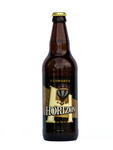
“zesty citrus aromas”
Citrusy smell and a taste of bitter almond. Contains barley malt.
Wadworth & Co. Ltd., Devizes, Wiltshire, England. 4.0% alcohol.
[ Posté le 28 mai 2011 à 19:40 |
pas de
commentaire |
lien permanent ]
Adresse de trackback
https://weber.fi.eu.org/blog/Biere/Wadworth/wadworth_horizon.trackback
Commentaires
Aucun commentaire
Mardi, 24 mai 2011
Traduction: [ Google | Babelfish ]
Catégories : [ Bricolage ]
I finally got the courage to try out the new op
amp
model (LT1495) I received last week.
I tried out the current monitor
circuit,
and it works. The supply voltage for the op amp was 5 V, and I measured the
current going through a red LED, powered with 15 V (coming from a supposedly
12 V power adapter). The measurement was 33,6 mA instead of the 31 mA given
by the amperemeter. Not very accurate, but I don't actually need high
accuracy.
Next step: trying to re-build the motor speed-controller circuit, get it
stable enough that it doesn't reboot the Arduino all the time, and check how
the current monitor behaves when the current is switching on and off all the
time.
[ Posté le 24 mai 2011 à 21:52 |
pas de
commentaire |
lien permanent ]
Adresse de trackback
https://weber.fi.eu.org/blog/Bricolage/new_op_amp.trackback
Commentaires
Aucun commentaire
Dimanche, 22 mai 2011
Traduction: [ Google | Babelfish ]
Catégories : [ Bière/Oakham ]
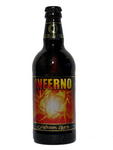
“a blend of five different hops from the Yakima Valley to create it's (sic) floral
aroma… complex fruits… dry, fruity, bitter finish”
Fruity and bitter. Contains barley and wheat.
Oakham ales, Woodston, PeterBorough, England. 4.4% alcohol.
[ Posté le 22 mai 2011 à 21:06 |
pas de
commentaire |
lien permanent ]
Adresse de trackback
https://weber.fi.eu.org/blog/Biere/Oakham/oakham_inferno.trackback
Commentaires
Aucun commentaire
Vendredi, 20 mai 2011
Traduction: [ Google | Babelfish ]
Catégories : [ Bière/Oakham ]
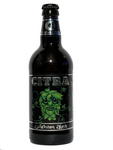
“single variety beer using only CITRA hops. pungent grapefruit, lychee and
goosberry aromas leading to a dry, bitter finish”
Smells definitely like lychee, and has a quite bitter taste. Contains barley
and wheat.
Oakham ales, Woodston, PeterBorough, England. 4.6% alcohol.
[ Posté le 20 mai 2011 à 19:25 |
pas de
commentaire |
lien permanent ]
Adresse de trackback
https://weber.fi.eu.org/blog/Biere/Oakham/oakham_citra.trackback
Commentaires
Aucun commentaire
Lundi, 16 mai 2011
Traduction: [ Google | Babelfish ]
Catégories : [ Bricolage/Arduino ]
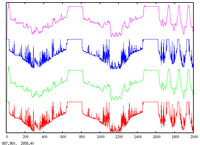
I hooked the Tyco slot-car controller to the Arduino's analog input with a
400 Ω pullup, and set the A/D converter's reference voltage to INTERNAL
(meaning 1.1 V). The sampling rate is 100 Hz and the output values are
between 0 and 1023. The movements are two successive slow
squeezing-and-releasing of the trigger, followed by three quick
squeeze-and-release.
- In the lower picture (red) are the raw data.
- In the second lower picture (green), the raw data is filtered by a 4th-order,
low-pass Butterworth filter, with a 5 Hz cutoff frequency.
- In the third lower picture (blue), a 32-levels quantization is applied to the
raw data.
- In the top picture (purple), the quantization is applied to the filtered
data.
A value of 1023 (the maximum) indicates that the electrical contact is broken
i.e., that the trigger is in the rest position or its maximum.
I have tried hardware filtering with capacitors (1 nF, 100 nF and 1μF), but
the digital filter gives the best results. I don't doubt that more advanced
hardware filters would have produced similar, if not better results, but they
would have required more components, and if you can afford to do it in
software, why bother with the extra hardware? Software filtering is amazing…
The code for the software filter has been generated on this very useful
website.
Additionally, conductive grease applied to the variable resistor may reduce
quite much the noise (or shortcut the whole coil of wire…)
[ Posté le 16 mai 2011 à 21:56 |
pas de
commentaire |
lien permanent ]
Adresse de trackback
https://weber.fi.eu.org/blog/Bricolage/Arduino/tyco_controller_adc.trackback
Commentaires
Aucun commentaire
Dimanche, 15 mai 2011
Traduction: [ Google | Babelfish ]
Catégories : [ Bricolage ]
I don't have a proper explanation as for the why, but the op amp
problem
I had recently is solved by using a virtual ground set to 1/2 Vsupply.
My understanding there is that the differential amplifier acts as both an
inverting and non inverting amplifier, and that it needs a negative supply (or
a virtual ground, which amounts to the same thing) for the non-inverting part.
Using a virtual ground as mentioned above has two drawbacks:
- it brings the reference point of Vout to 1/2 Vsupply, which
makes it much less nice to use with the Arduino's analog input (only the
upper-half of the input range is used because of this offset) and
- the maximum allowable range for the signals is between 1/2 Vsupply
and Vsupply-1.5V (for the LM324), which is not much even when
Vsupply is 12 V.
Moreover, the differential amplifier needs well matched resistors: R1||R2 =
R3||R4 (R1||R2 is the equivalent resistance of R1 in
parallel with R2), othwerwise it has an additional DC offset which gets amplified by the
gain of the differential amplifier, making the whole thing useless for my purpose of
amplifying the very small voltage across a shunt.
On the bright side though, I found another op amp, the LT1495, that can accept
inputs beyond Vsupply and with a very low input offset. Its only
drawback is that it costs 25 times more than the LM324 (which was very, very
cheap, but still).
[ Posté le 15 mai 2011 à 20:52 |
1
commentaire |
lien permanent ]
Adresse de trackback
https://weber.fi.eu.org/blog/Bricolage/infernal_op_amp_2.trackback
Commentaires
New Op Amp
Commentaire N° 1, Blog & White
le 24 mai 2011 à 21:52
Traduction: [ Google | Babelfish ]
Catégories : [ Bière/Oakham ]
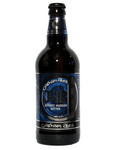
“Sir Jeffrey Hudson was an adventurer, courtier and duelist in the service of
King Charles I… citrus fruitness and dry bitter finish.”
Definitely citrusy, and with maybe a hint of bitter almond in the aftertaste.
Contains barley and wheat.
Oakham ales, Woodston, PeterBorough, England. 4.2% alcohol.
[ Posté le 15 mai 2011 à 12:36 |
pas de
commentaire |
lien permanent ]
Adresse de trackback
https://weber.fi.eu.org/blog/Biere/Oakham/oakham_jhb.trackback
Commentaires
Aucun commentaire
Samedi, 7 mai 2011
Traduction: [ Google | Babelfish ]
Catégories : [ Bricolage/Arduino ]
I just tested the first prototype of the speed controller for the Tyco slot
cars. Currently, the Arduino reads the potentiometer with analogRead() and
applies PWM (with analogWrite()) on the base of a BC547 transistor. The
transistor acts as a driver for a FQP70N10 MOSFET which controls the motor.
The MOSFET doesn't seem to heat at all (I selected this model for exactly that
reason) and speed control works (i.e., I can drive the car on a simple ring
circuit, down to quite low speed).
My initial idea was to drive the MOSFET directly with the Arduino, but I
noticed after buying a pair of those that they it's not a logic-level MOSFET.
Driving it with 5 V would theoretically work (I need about 1 A, which is well
within the capabilities of the device), but the internal resistance would be much
higher that the value touted on the datasheet, and thus dissipate more heat
(exact figures for the resistance at 5 V are not available from the
datasheet).
This was a proof of concept, and the concept is therefore proven, I can start
working on measuring, with the Arduino, the current delivered to the motor.
[ Posté le 7 mai 2011 à 22:21 |
pas de
commentaire |
lien permanent ]
Adresse de trackback
https://weber.fi.eu.org/blog/Bricolage/Arduino/slot_car_speed_controller_1.trackback
Commentaires
Aucun commentaire
Catégories : [ Cuisine/Chocolats ]
Kultasuklaa, Tummasuklaa, 70%:
pas mauvais, mais rien de remarquable.
Kultasuklaa, Naturel tumma, 54%:
plus sucré que le précédent, avec un coté « biscuit au beurre » industriel
[ Posté le 7 mai 2011 à 22:20 |
pas de
commentaire |
lien permanent ]
Adresse de trackback
https://weber.fi.eu.org/blog/Cuisine/Chocolats/chocolats_20.trackback
Commentaires
Aucun commentaire






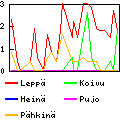





I finally got the courage to try out the new op amp model (LT1495) I received last week.
I tried out the current monitor circuit, and it works. The supply voltage for the op amp was 5 V, and I measured the current going through a red LED, powered wi...